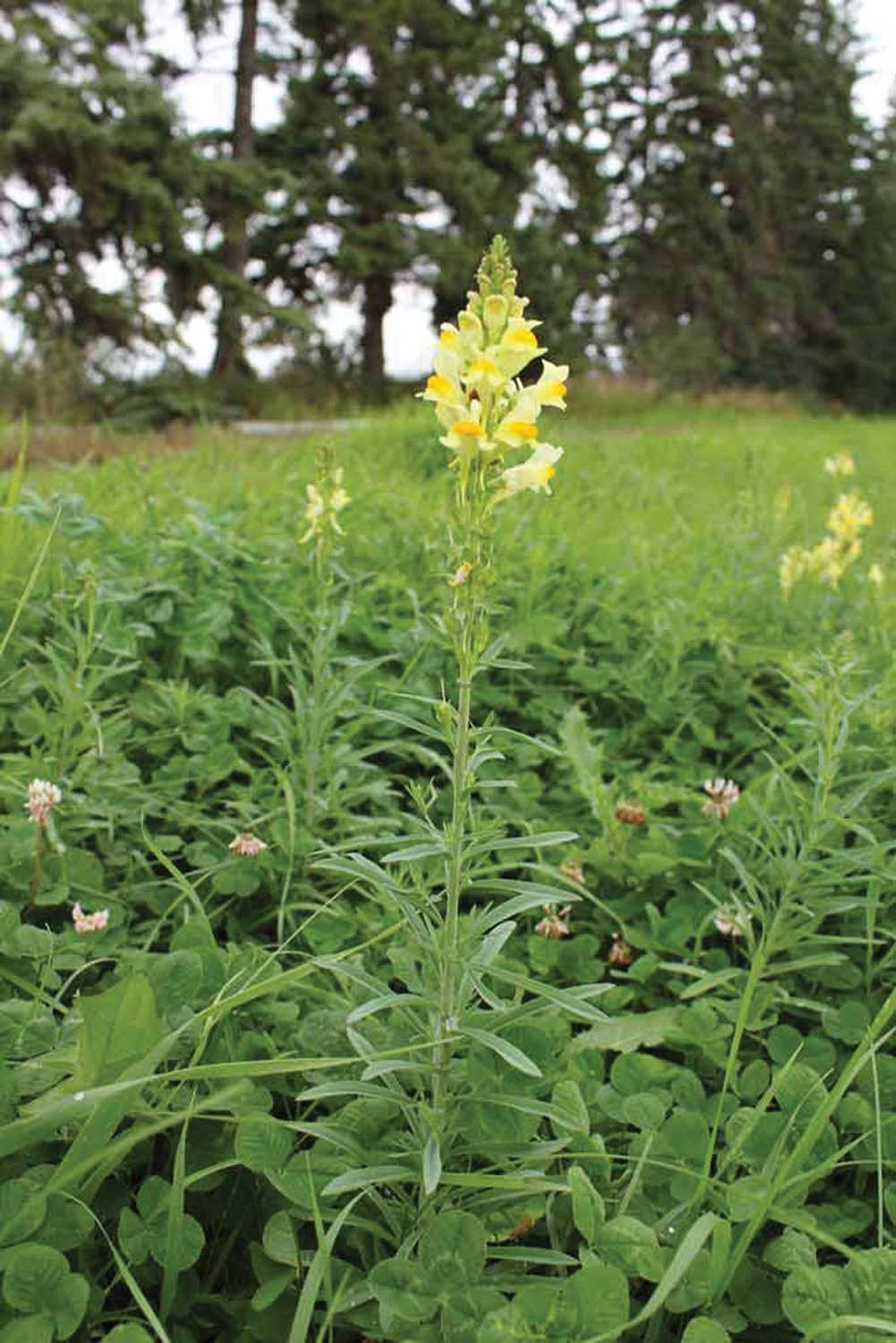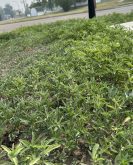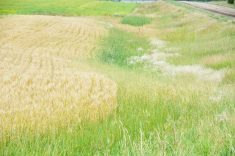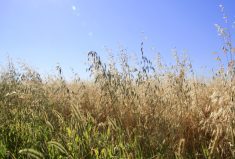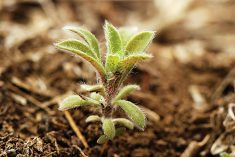It’s often mistaken for a type of snapdragon, but don’t be fooled by this invader of fields and pastures.
Originally brought from Europe as an ornamental, quick-spreading yellow toadflax — a.k.a. wild snapdragon — is found all across North America. It spreads by both seed (up to 5,000 seeds per stem) and its creeping root system, forming dense patches that are unpalatable to livestock and can outcompete more favourable species.
Yellow toadflax has lance-shaped leaves, bright-yellow flowers (often slightly orange close to the stem), and ranges from 15 centimetres to one metre in height. It is most often spotted during July and August when it is flowering and grows well in pastures, cultivated land, and along roadsides.
Herbicides alone aren’t sufficient to control yellow toadflax, so if you think you have spotted this plant, contact your local agricultural fieldman.

